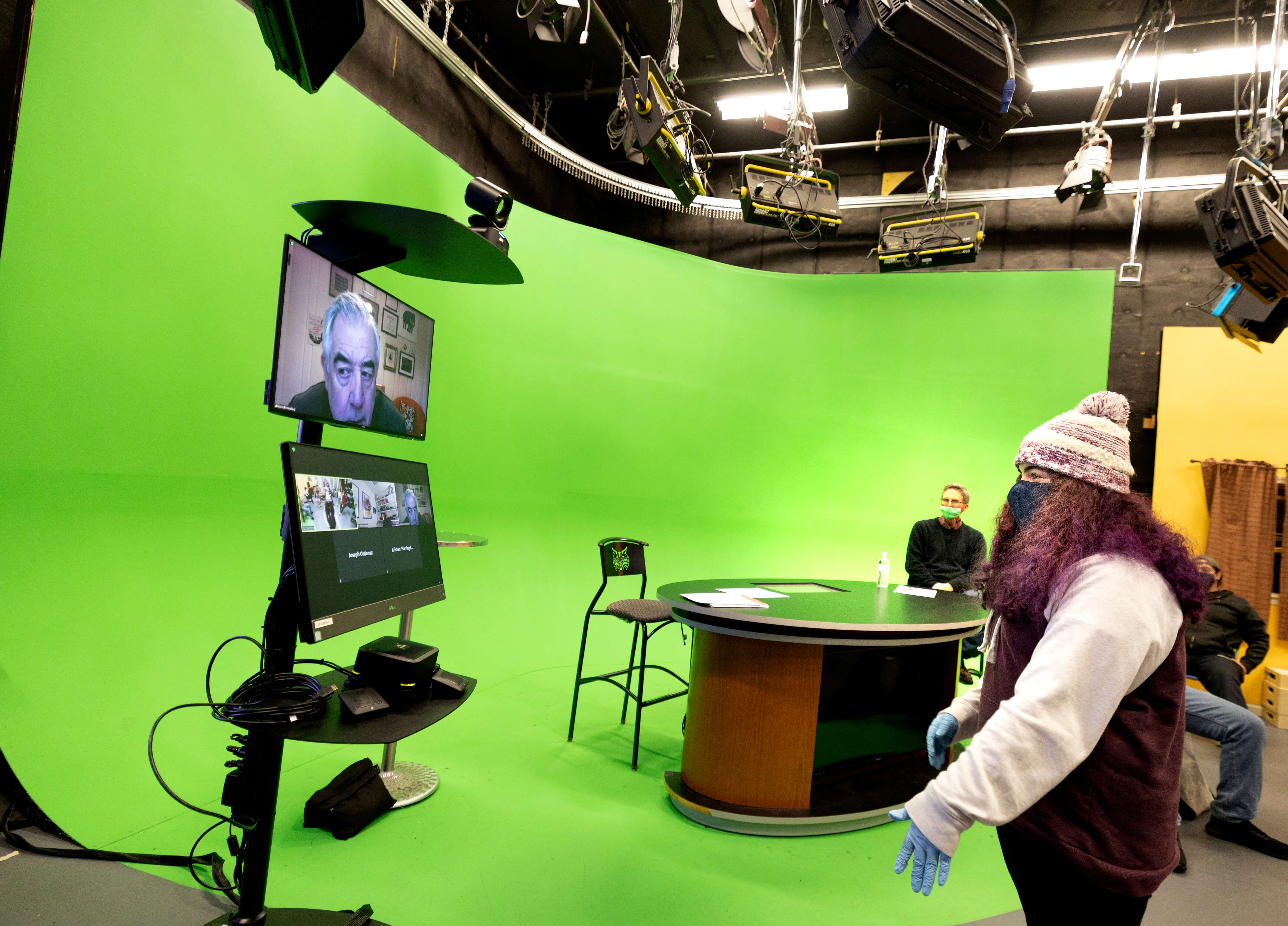
Screen Test
February 08, 2021

February 08, 2021

Provost Debra Liebowitz is hopeful, even optimistic, about the Spring 2021 semester. After a sweeping review of the academic schedule, Quinnipiac will offer students more than a 150 percent increase in the number of on-ground instructional minutes this spring compared to last fall.
But this outcome didn’t happen overnight.
Last summer, university leaders confronted the fallout from the COVID-19 pandemic: How do you adjust to the real world in real time? How do you teach remote students who live across the country and around the world? More importantly, how do you keep everyone safe?
The answer was to leverage technology as an educational asset, but not a replacement for the student-teacher connections Quinnipiac has always enjoyed. Although Zoom provided a new platform for virtual instruction, QU took it a step further with the creation of interactive Zoom carts.
Unlike traditional audiovisual carts, Zoom carts are smartly equipped with dual screens—one screen that shows the on- ground classroom while the other shows the virtual classroom. Together, students and faculty can share content, deliver presentations and interact synchronously during class.
“There was a real thoughtfulness about investing in technology and being bold and doing things differently,” Liebowitz said. “We’re very fortunate to have an IT team at the top of its game that could manifest that vision building our Zoom carts, testing the technology and making the Zoom carts available in 225 learning spaces.”
From Fred Tarca, vice president and chief information and technology officer, to Lauren Erardi, director of academic technology—and countless others in the Office of Information Services—the pivot to Zoom-assisted instruction became a reality last August.
Liebowitz also credited faculty for learning how to use Zoom’s features and Zoom carts before the fall semester. She said more than 800 faculty enrolled in a two-week boot camp last summer. Many others participated in hour-long webinars to learn new Zoom skills.
“All of those things are really impressive and speak to the agility of the institution,” Liebowitz said. “We know there are still going to be issues along the way, but our collective commitment will continue to carry us forward.”
Cindy Kern, assistant teaching professor of science edu- cation and director of the Quinnipiac University Science Teaching and Learning Center, said the Zoom technology was launched effectively, but more research needs to be done with pedagogy, modality and how students learn.
“At the university level, people worked incredibly hard to make sure we had the resources and time to engage and learn about Zoom carts,” said Kern, an expert in designing online learning environments.
At the faculty level, Kern said, she looks forward to en- gaging with colleagues in more collaborative and purposeful ways with Zoom.
“It would be nice to share more ideas with each other: ‘I want to be able to do A, B and C with my students. Does anybody have any ideas?’” Kern said.
Other faculty members have already worked together to refine teaching strategies and best practices, Liebowitz said. Over the semester break, the IT team upgraded the sound systems and microphones in 40 learning spaces, she added.
“We’re learning from students and faculty some of what people think has worked and some of what they wish would change,” Liebowitz said. “This technology—and we’ve really just started tapping into it—can help people do really cool things. I’ve talked to people who are developing partnerships with folks at other universities and other parts of the world.”
Stephen Straub, professor of athletic training and sports medicine, said the Zoom technology worked especially well for his students with clinical affiliations. Instead of taking an independent study class, these students attended class from Colorado, the Chicago area and Wyoming.
“I’m coming into the spring semester excited and feeling much more confident about using this technology,” said Straub, who also serves as chair of rehabilitation, health and wellness, and director of athletic training. “I see the rainbow at the end of this big [COVID-19] storm.”
Zoom officials published a case study on Quinnipiac’s integration of Zoom carts with Zoom technology to develop the Q-Flex hybrid learning model. The authors cited QU’s efforts as a leading practice in higher education. Zoom also invited Quinnipiac to present at its annual conference.
“Without question, the future is now,” Liebowitz said. “But we’re trying to be really strategic about how we use this technology to enhance learning and outcomes. Not everything is going to change, but there are definitely pieces of this technology that are super exciting. We’re standing on tectonic plates right now as they shift.”
Quinnipiac Today is your source for what's happening throughout #BobcatNation. Sign up for our weekly email newsletter to be among the first to know about news, events and members of our Bobcat family who are making a positive difference in our world.
Sign Up Now